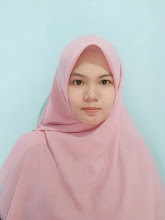Jean Piaget is Swiss psychologist
conducting a lifelong study of children’s cognitive development in the past
half-century (Piaget, 1954, 1964, 1969). Piaget’s theory focused on schema and
assimilation and accommodation. According to Piaget, children are naturally
curious explorers who are constantly trying to make sense of the world by
interacting with their environment and with others (Loewenstein, 1994). In this
process, they construct schema or mental process to organize information. Furthermore,
assimilation involves trying to relate something new to something that we are
really know whereas accommodation takes place when an individual changes an
existing schema so that it can explain the new experiences. The processes of
assimilation are motivated by need to find equilibrium, the natural tendency to
find consistency in one’s thinking. To understand about Children’s cognitive
development, Piaget believed that it happens in a structured sequence of four
stages: sensorimotor, preoperational, concrete operational, and formal
operational.
Firstly, sensorimotor stage (0-2
years old) shows that infants are able to coordinate their sensory and motor
abilities to create a set of behavioral schema. In this stage infant only
shows his reflective form to adapt with world. The main process of cognitive development
in the stage is object permanent—understanding that object and phenomenon
continually exist when the object and phenomenon cannot be seen, heard, and
touched. It means that infant can distinguish his own self and environment.
Furthermore, preoperational stage
(2-7 years old) have four characteristics. Firstly, the children have not yet
developed the ability to think logically and they use their perception and
intuition to know something and solve problem. Secondly, the children use symbols
(e.g. words, numbers, languages) to represent actual object and event around them.
The third characteristic in this stage is the use of pretend play. It means the
children use object available in environment. The last characteristic is egocentrism.
Children in this stage display that they are not able to consider the world
from their own perspective.
Moreover, concrete operational stage
(7-9 years old) is characterized by children ability to think logically about
concrete object (Flavell, Miller, & Miller 2002). There are three kinds of
the development; classification—the ability to group objects on the basis of
common characteristic, seriation—the ability to order objects on the basis of
increasing, decreasing, length, volume, and weight, transitivity—the ability to
infer a relationship between two objects based on the known relationship of one
of the object with third object.
In addition, formal operational stage
(11++ years old) is the same as the stage of concrete operations. It
includes both logical and systematic thinking. There are five mental
characteristics in this stage. First, the children can use propositional logic, ability to judge argument when the argument is
opposite with reality. Second, the children can use hypothetical deductive reasoning, the ability to generate and test hypothesis
or predictions by separating and controlling variables. Third, the children can
use analogical reasoning, the ability
to understand how something unfamiliar works based on an understanding of how
something more familiar works. Fourth, the children can use combinatorial reasoning,
the ability to conceptualize how several elements might be combined. Fifth, the
children will also be able to solve problems involving probability and proportional reasoning.
However, why should teachers
understand about children’s cognitive development? Because teachers should know
appropriate approach, method, or technique to teach their student. Education should
know be suitable with this development. It means teaching is based on their level,
not easy or difficult, in order to not feel scare or boring, so the teachers
must teach the students based on their needs.
For Furthermore information, reading
these books
John W. Santrock. (2001). Educational psychology (5th ed).
US: Mc Graw Hill
Moreno, R. (2010). Educational psychology. US: John Wiley
and Sons, Inc.
Flavell, Miller, & Miller (2002). Cognitive Development (4th ed) Upper Saddle River, NJ:
Prentice
Hall.
Loewenstein, 1994. The psychology
of curiosity: A review and reinterpretation. Psychology Bulletin,
117,75-98.


